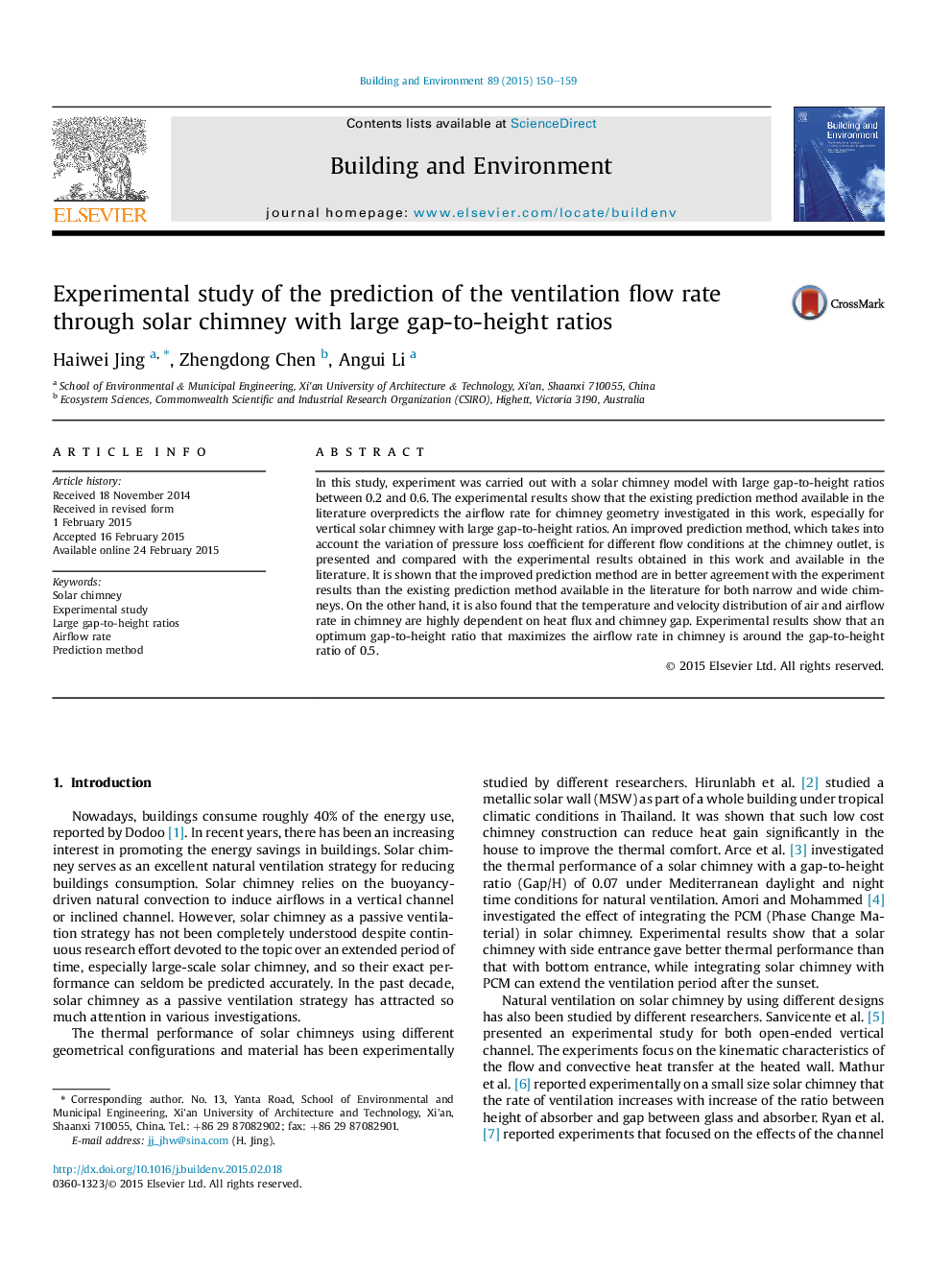| کد مقاله | کد نشریه | سال انتشار | مقاله انگلیسی | نسخه تمام متن |
|---|---|---|---|---|
| 6699953 | 502536 | 2015 | 10 صفحه PDF | دانلود رایگان |
عنوان انگلیسی مقاله ISI
Experimental study of the prediction of the ventilation flow rate through solar chimney with large gap-to-height ratios
ترجمه فارسی عنوان
بررسی تجربی پیش بینی میزان جریان تهویه از طریق دودکش خورشیدی با نسبت بزرگی به ارتفاع
دانلود مقاله + سفارش ترجمه
دانلود مقاله ISI انگلیسی
رایگان برای ایرانیان
کلمات کلیدی
دودکش خورشیدی، مطالعه تجربی، نسبت بزرگی نسبت به قد، نرخ جریان هوا، روش پیش بینی،
ترجمه چکیده
در این تحقیق، آزمایش با استفاده از مدل دودکش خورشیدی با نسبت بزرک به فاصله کوتاه بین 0.2 تا 0.6 انجام شد. نتایج تجربی نشان می دهد که روش پیش بینی موجود در ادبیات، سرعت جریان هوا برای هندسه دودکش مورد بررسی قرار گرفته است، به ویژه برای دودکش عمودی خورشیدی با نسبت بزرگی نسبت به ارتفاع. یک روش پیشبینی پیشرفته، که با توجه به تنوع ضریب افت فشار برای شرایط مختلف جریان در خروجی دودکش، در نظر گرفته شده است و با نتایج تجربی حاصل شده در این کار و در ادبیات موجود، مقایسه شده است. نشان داده شده است که روش پیش بینی بهبود یافته در مقایسه با روش پیش بینی موجود در ادبیات برای هر دودکش باریک و گسترده هماهنگی بهتر با نتایج آزمایش دارد. از سوی دیگر، همچنین مشخص شده است که توزیع دما و سرعت سرعت هوا و جریان هوا در دودکش به شدت وابسته به شار حرارتی و شکاف دودکش است. نتایج تجربی نشان می دهد که نسبت شکاف به ارتفاع مطلوب که حداکثر میزان جریان هوا در دودکش را در مقایسه با نسبت فاصله نسبت به ارتفاع 0.5 برابر می کند.
موضوعات مرتبط
مهندسی و علوم پایه
مهندسی انرژی
انرژی های تجدید پذیر، توسعه پایدار و محیط زیست
چکیده انگلیسی
In this study, experiment was carried out with a solar chimney model with large gap-to-height ratios between 0.2 and 0.6. The experimental results show that the existing prediction method available in the literature overpredicts the airflow rate for chimney geometry investigated in this work, especially for vertical solar chimney with large gap-to-height ratios. An improved prediction method, which takes into account the variation of pressure loss coefficient for different flow conditions at the chimney outlet, is presented and compared with the experimental results obtained in this work and available in the literature. It is shown that the improved prediction method are in better agreement with the experiment results than the existing prediction method available in the literature for both narrow and wide chimneys. On the other hand, it is also found that the temperature and velocity distribution of air and airflow rate in chimney are highly dependent on heat flux and chimney gap. Experimental results show that an optimum gap-to-height ratio that maximizes the airflow rate in chimney is around the gap-to-height ratio of 0.5.
ناشر
Database: Elsevier - ScienceDirect (ساینس دایرکت)
Journal: Building and Environment - Volume 89, July 2015, Pages 150-159
Journal: Building and Environment - Volume 89, July 2015, Pages 150-159
نویسندگان
Haiwei Jing, Zhengdong Chen, Angui Li,
